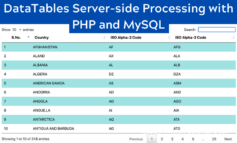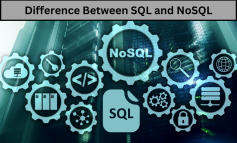Introduction
Embarking on the path of software development is a captivating expedition, brimming with abundant learning prospects at every turn. Amidst this realm, a skill of paramount importance emerges—one that surpasses the mere act of code creation: debugging. Debugging entails the intricate process of identifying, diagnosing, and rectifying code errors, bestowing upon it the status of an indispensable art for every software developer.
The Significance of Debugging in Software Development
Within the realm of software development, the inevitability of bugs becomes an undeniable truth. Embracing this reality and acquiring the prowess to effectively manage such hitches can profoundly augment one’s productivity. Skillful debugging leads to the attainment of more robust software, an elevated user experience, and ultimately, the triumph of a successful product.
Debugging Techniques in Software Development
Breakpoint Debugging
Breakpoint debugging stands as an influential technique, halting the execution of a program at specific lines of code. This deliberate pause grants developers the opportunity to scrutinize the program’s prevailing state at that precise moment. Placing breakpoints at chosen code segments allows for the examination of variable values, memory states, and call stacks. This technique proves invaluable when one possesses a general idea of the error’s whereabouts but requires additional information to pinpoint it accurately.
An array of tools facilitates breakpoint debugging, including integrated development environments (IDEs) such as IntelliJ, Eclipse, and Visual Studio Code, along with debugging tools integrated into various web browsers.
Debugger and Profiler Tool for PHP
Print Debugging
Print debugging, often referred to as “printf debugging,” involves strategically inserting print statements into the code. These statements serve the purpose of displaying variable values, program states, or markers denoting specific code milestones. This technique particularly shines when navigating intricate and extensive codebases or working in environments where other debugging tools may be absent.
Despite its apparent simplicity, print debugging wields remarkable effectiveness. Observing the output of print statements allows for tracing the program’s execution flow and pinpointing the juncture where deviations occur. However, one must exercise caution, as excessive print statements can inundate the output, impeding the quest for pertinent information. It remains imperative to remove or comment on these print statements once their purpose has been served.
Rubber Duck Debugging
Enter the realm of rubber duck debugging—a unique and unconventional technique wherein developers expound upon their code, line by line, to an inanimate companion, such as a rubber duck. This peculiar method comes to the rescue when one finds themselves entrapped in the quagmire of code that fails to function as expected, despite hours of scrutiny.
The act of articulating the code aloud compels developers to adopt a measured pace, meticulously examining each line. Often, this change in perspective proves transformative, unveiling errors that would have otherwise eluded detection. Although the act of conversing with a rubber duck or any other inanimate object may evoke a sense of silliness, it astonishingly emerges as a fruitful conduit for solutions.
Tools Facilitating the Debugging Endeavor
While techniques undoubtedly hold significance, the presence of appropriate tools can significantly facilitate the debugging process. Chrome DevTools, Firebug, Postman, JUnit, Jest, and a multitude of other tools tailor-made for specific development environments, streamline the debugging experience, rendering it less time-consuming.
Nurturing a Debugging Mindset
Debugging transcends the mere utilization of tools and techniques—it is a state of mind. A proficient debugger embodies the virtues of patience, attentiveness, and persistence. Cultivating a systematic approach, coupled with unwavering attention to detail and an in-depth understanding of the codebase, cultivates an environment conducive to effective debugging.
Conclusion
Mastering the art of debugging emerges as an indispensable skill within the repertoire of any software developer. It not only minimizes the time spent on error resolution but also paves the path toward the creation of more resilient software, leading to heightened user satisfaction. Each encountered bug presents a unique opportunity for growth and improvement. So, embrace the debugging journey with enthusiasm and perseverance, for it holds the key to unlocking the full potential of your software endeavors. Happy debugging!




Leave a Reply